 W
WHatazō Adachi was a general in the Imperial Japanese Army during World War II.
 W
WKorechika Anami was a general in the Imperial Japanese Army during World War II, and was War Minister at the time of the surrender of Japan.
 W
WRikichi Andō was a general in the Imperial Japanese Army and 19th and final Japanese Governor-General of Taiwan from 30 December 1944 to October 1945.
 W
WYukio Araki was a Japanese aviator of the Imperial Japanese Army during World War II. As a kamikaze pilot and member of the 72nd Shinbu Squadron, Araki's final mission took place on May 27, 1945 during the Battle of Okinawa when he flew his bomb-laden Mitsubishi Ki-51 to deliberately crash into the USS Braine. It is speculated that Araki and one other pilot are responsible for hitting the ship, killing 66 of its crew. At 17 years old, Araki is one of the youngest kamikaze pilots of World War II.
 W
WIsamu Chō was an officer in the Imperial Japanese Army known for his support of ultranationalist politics and involvement in a number of attempted coup d'états in pre-World War II Japan.
 W
WMajor Kenji Hatanaka was a Japanese military officer and one of the chief conspirators in the Kyūjō incident, a plot to seize the Imperial Palace and to prevent the broadcast of Emperor Hirohito's surrender speech to mark the end of World War II.
 W
WGeneral Baron Shigeru Honjō was a general in the Imperial Japanese Army during the early period of the Second Sino-Japanese War. He was considered an ardent follower of Sadao Araki's doctrines.
 W
WSanji Iwabuchi was a Rear Admiral in the Imperial Japanese Navy during the Pacific War of World War II. He committed suicide after facing imminent defeat during the Battle of Manila.
 W
WKakuji Kakuta , was an admiral in the Imperial Japanese Navy during World War II. He is noted for his role in commanding Japanese naval aviation units in the Pacific War.
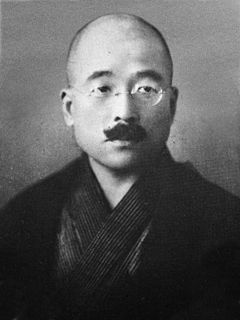 W
WChikahiko Koizumi was a Japanese military physician.
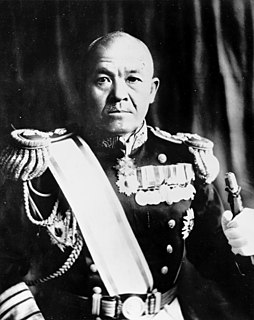 W
WChūichi Nagumo was a Japanese admiral in the Imperial Japanese Navy (IJN) during World War II. Nagumo led Japan's main carrier battle group, the Kido Butai, in the attack on Pearl Harbor, the Indian Ocean raid and the Battle of Midway. He committed suicide during the Battle of Saipan.
 W
WKunio Nakagawa was the commander of Japanese forces which defended the island of Peleliu in the Battle of Peleliu which took place from 15 September to 27 November 1944. He inflicted heavy losses on attacking U.S. Marines and held Peleliu Island for almost three months. On the evening of 24 November, after the battle was lost, he performed seppuku in the tradition of Japanese samurai warriors. He was posthumously promoted to lieutenant general.
 W
WNitta Yoshisada was the head of the Nitta clan in the early fourteenth century, and supported the Southern Court of Emperor Go-Daigo in the Nanboku-chō period. He famously marched on Kamakura, besieging and capturing it from the Hōjō clan in 1333.
 W
WCount Nogi Maresuke , also known as Kiten, Count Nogi, was a Japanese general in the Imperial Japanese Army and a governor-general of Taiwan. He was one of the commanders during the 1894 capture of Port Arthur from China. He was a prominent figure in the Russo-Japanese War of 1904–05, as commander of the forces which captured Port Arthur from the Russians.
 W
WShirō Nonaka was an Imperial Japanese Army officer who was a central conspirator in the February 26 Incident in 1936. His final rank was Captain.
 W
WTaira no Norimori (1128–1185) was the younger half-brother of Taira no Kiyomori and father-in-law of Fujiwara no Naritsune. He was the 4th son of Taira no Tadamori. During the Hogen Rebellion, he and his brother supported Emperor Go-Shirakawa. At the Battle of Dan-no-ura during the Genpei War, he committed suicide by jumping overboard. His older brother, Taira no Tsunemori, also committed suicide. His Sons were:Taira no Noritsune Taira no Michikori Taira no Narimori
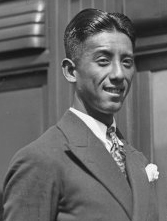 W
WRyosuke Nunoi was a tennis player from Japan.
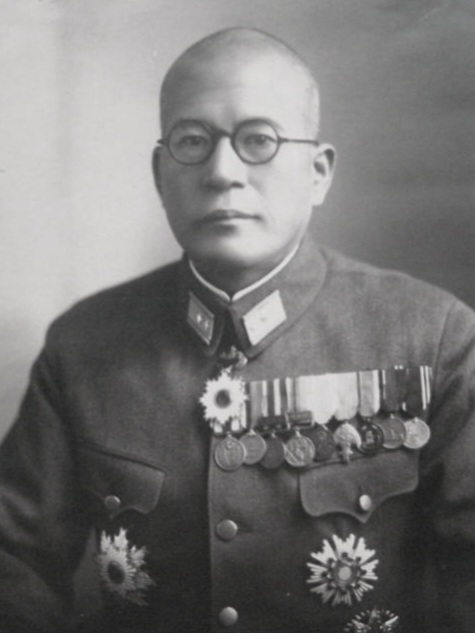 W
WHideyoshi Obata was a general in the Imperial Japanese Army in World War II.
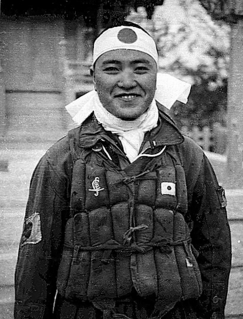 W
WKiyoshi Ogawa was a Japanese naval aviator ensign (少尉) of the Imperial Japanese Navy during World War II. As a kamikaze pilot, Ensign Ogawa's final action took place on May 11, 1945, during the Battle of Okinawa. Piloting a bomb-laden Mitsubishi Zero fighter during Operation Kikusui No. 6, Ogawa flew through American anti-aircraft fire and attacked the U.S. Navy aircraft carrier USS Bunker Hill, less than one minute after his flight leader, sub-lieutenant Seizō Yasunori, crashed into the ship. He dropped a 250-kilogram (550 lb) bomb, never pulled out of the dive, and crashed deliberately into the flight deck near the control tower of the aircraft carrier. The bomb penetrated Bunker Hill's flight deck and exploded. Gasoline fires flamed up and several explosions took place when re-armed and re-fueled planes on deck exploded and caught fire. 393 American sailors died with Yasunori and Ogawa, 264 were wounded, and the ship was disabled for the remainder of the war.
 W
WTakijirō Ōnishi was an admiral in the Imperial Japanese Navy during World War II, who came to be known as the father of the kamikaze.
 W
WMinoru Ōta was an admiral in the Imperial Japanese Navy during World War II, and the final commander of the Japanese naval forces defending the Oroku Peninsula during the Battle of Okinawa.
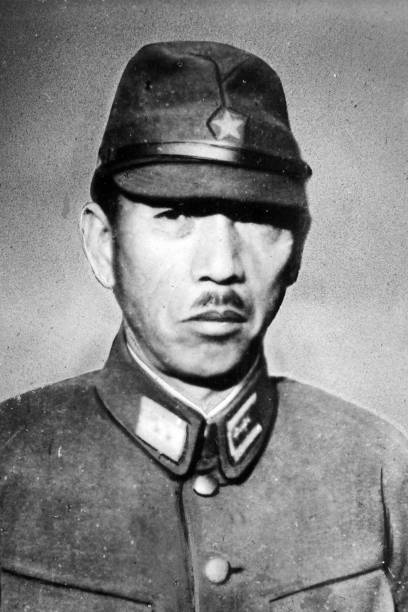 W
WYoshitsugu Saitō was a lieutenant general in the Imperial Japanese Army during World War II. He commanded Japanese forces during the Battle of Saipan and killed himself during the battle.
 W
WYukio Seki was a Japanese naval aviator of the Imperial Japanese Navy during World War II. As a kamikaze pilot, Lieutenant Seki led one of the three fighter groups of the second official kamikaze attack in World War II. Seki's final action took place on October 25, 1944, during the Battle of Leyte Gulf. He led a unit of five bomb-armed Mitsubishi Zero fighters, crash-diving his plane deliberately into the USS St. Lo's flight deck, being the first kamikazes to sink an enemy ship.
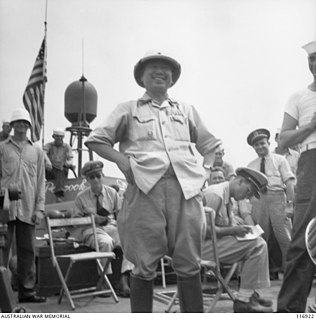 W
WLieutenant-Colonel Tatsuji Suga of the Imperial Japanese Army was the commander of all prisoner-of-war (POW) and civilian internment camps in Borneo, during World War II. Suga committed suicide five days after being taken prisoner by Australian forces in September 1945.
 W
WHajime Sugiyama was a Japanese field marshal and one of the leaders of Japan's military throughout most of World War II. As Army Minister in 1937, Sugiyama was a driving force behind the launch of hostilities against China in retaliation for the Marco Polo Bridge Incident. After being named the Army’s Chief of Staff in 1940, he became a leading advocate for expansion into Southeast Asia and preventive war against the United States. Upon the outbreak of hostilities in the Pacific, Sugiyama served as the army’s commander-in-chief until his removal by Prime Minister Hideki Tojo in February 1944. Following Tojo's ouster in July 1944, he was reappointed to the post of Army Minister in Kuniaki Koiso's cabinet until its dissolution in April 1945. Ten days after Japan's surrender on 2 September 1945, he committed suicide.
 W
WTaira no Tomomori (1152–1185) was the son of Taira no Kiyomori, and one of the Taira Clan's chief commanders in the Genpei War at the end of the Heian period of Japanese history.
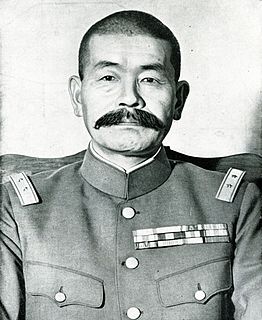 W
WShizuichi Tanaka was a general in the Imperial Japanese Army and Japanese Military Governor of the Philippines during World War II.
 W
WKumaichi Teramoto was a Japanese Lieutenant General during World War II.
 W
WKōkichi Tsuburaya was a Japanese athlete who competed mainly as a marathoner. Kokichi was also a 1st lieutenant in the Japan Ground Self-Defense Force.
 W
WTaira no Tsunemori (1124–1185) was the 3rd son of Taira no Tadamori and a younger half-brother of Taira no Kiyomori. He committed suicide with his younger brother Taira no Norimori at the Battle of Dan-no-ura at the end of the Genpei War.
 W
WMitsuru Ushijima was a Japanese general who served during the Second Sino-Japanese War and World War II. He was the commanding general of the 32nd Army, which fought in the Battle of Okinawa during the final stages of the war. Ushijima's troops were defeated, and at the end of the battle he committed suicide.